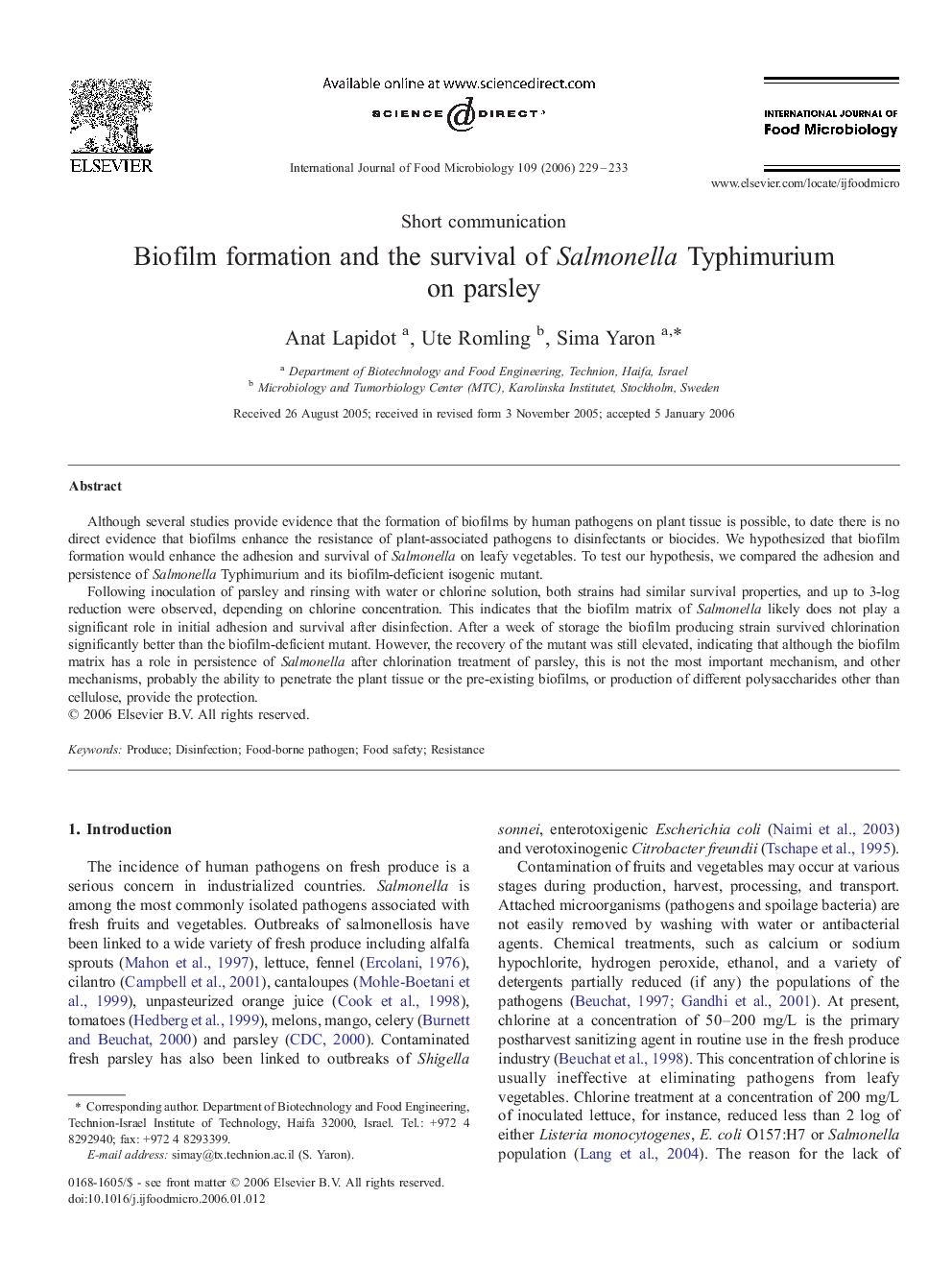| Article ID | Journal | Published Year | Pages | File Type |
|---|---|---|---|---|
| 4370157 | International Journal of Food Microbiology | 2006 | 5 Pages |
Although several studies provide evidence that the formation of biofilms by human pathogens on plant tissue is possible, to date there is no direct evidence that biofilms enhance the resistance of plant-associated pathogens to disinfectants or biocides. We hypothesized that biofilm formation would enhance the adhesion and survival of Salmonella on leafy vegetables. To test our hypothesis, we compared the adhesion and persistence of Salmonella Typhimurium and its biofilm-deficient isogenic mutant.Following inoculation of parsley and rinsing with water or chlorine solution, both strains had similar survival properties, and up to 3-log reduction were observed, depending on chlorine concentration. This indicates that the biofilm matrix of Salmonella likely does not play a significant role in initial adhesion and survival after disinfection. After a week of storage the biofilm producing strain survived chlorination significantly better than the biofilm-deficient mutant. However, the recovery of the mutant was still elevated, indicating that although the biofilm matrix has a role in persistence of Salmonella after chlorination treatment of parsley, this is not the most important mechanism, and other mechanisms, probably the ability to penetrate the plant tissue or the pre-existing biofilms, or production of different polysaccharides other than cellulose, provide the protection.
